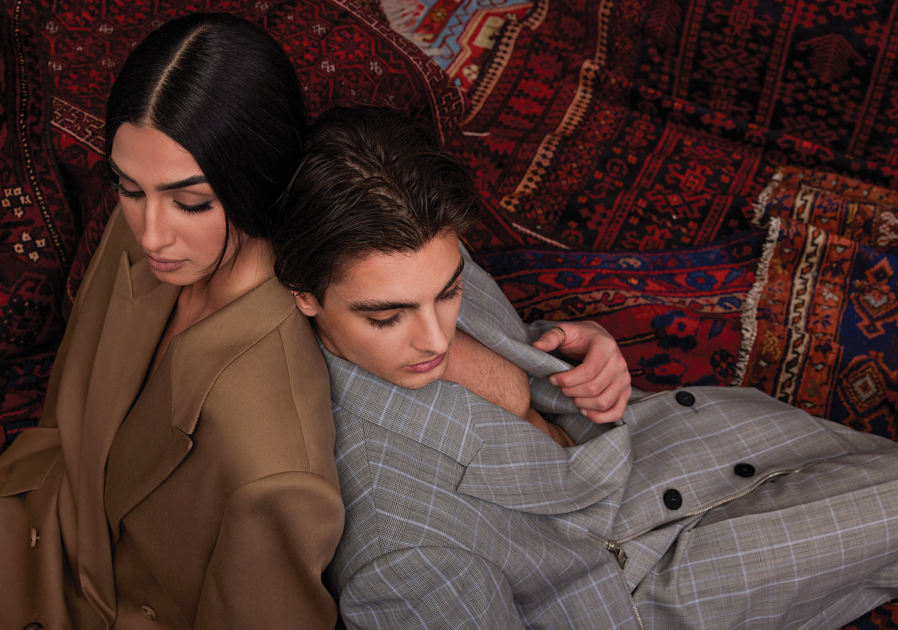Photography — Pooya Nabei
Styling — Sarah D’Arcey
Hair & Makeup — Farrah Sanei
Written — Catherine Dunwoody
Models — Sam Gousheh & Saina Sooren
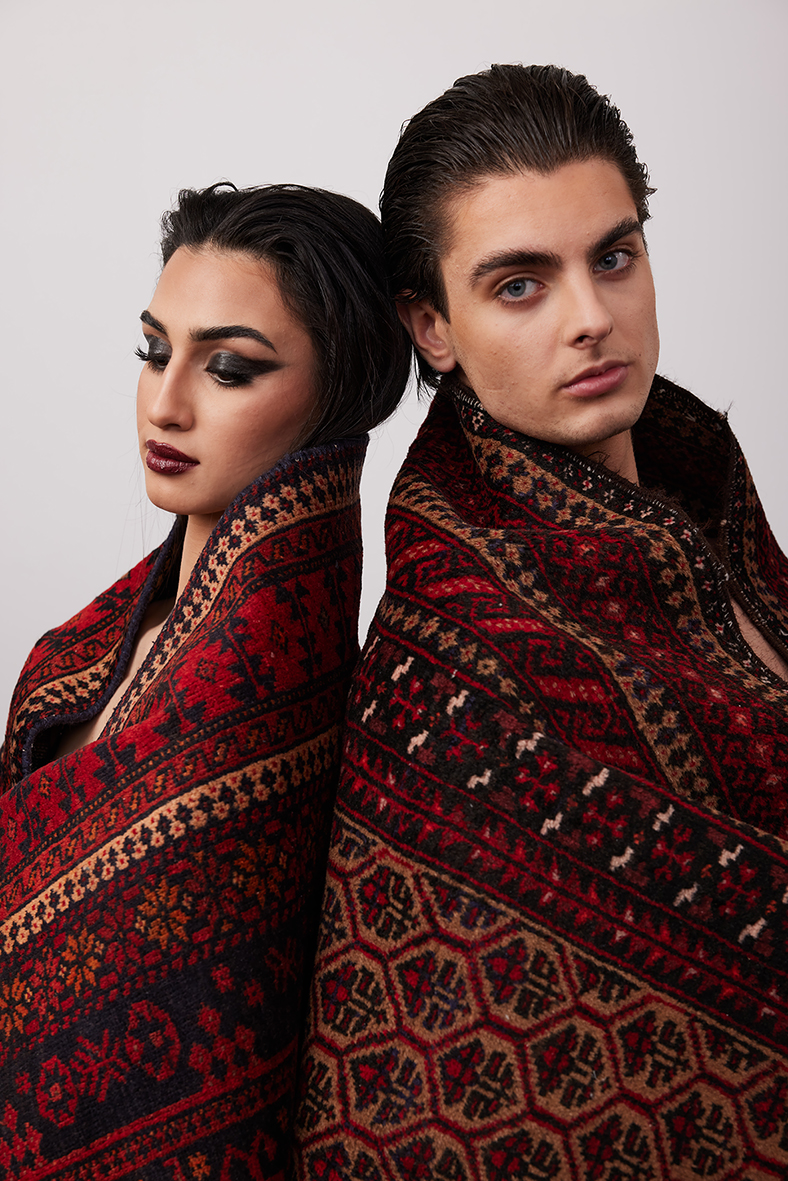
We Are What We Wear.
Never underestimate this concept. The clothing we wear, plus the accessories we choose to either jazz up or tone down our wardrobe, says a lot about who we are. Our look tells the world where we’re from, perhaps what we do for a living and how we feel about ourselves.
What we wear goes beyond just expressing our style but illustrates our identity and sends social signals with nonverbal cues to other people. Our clothing hints at how much power we wield. How much influence we have over others. How smart we are. What we value. How much we earn.
Writers, costume designers and film directors have always used fashion to give us clues about a character. Consider Harry Potter’s glasses, Gordon Gekko’s Wall Street power suits or Cleopatra’s jewels. When it comes to our own wardrobes, the questions for us real people vs. fictional or historical characters are simple – what signals are we sending? Are we getting the results we want with those signals? How would we describe our personal style? Professional or casual? Edgy or down-to-earth?
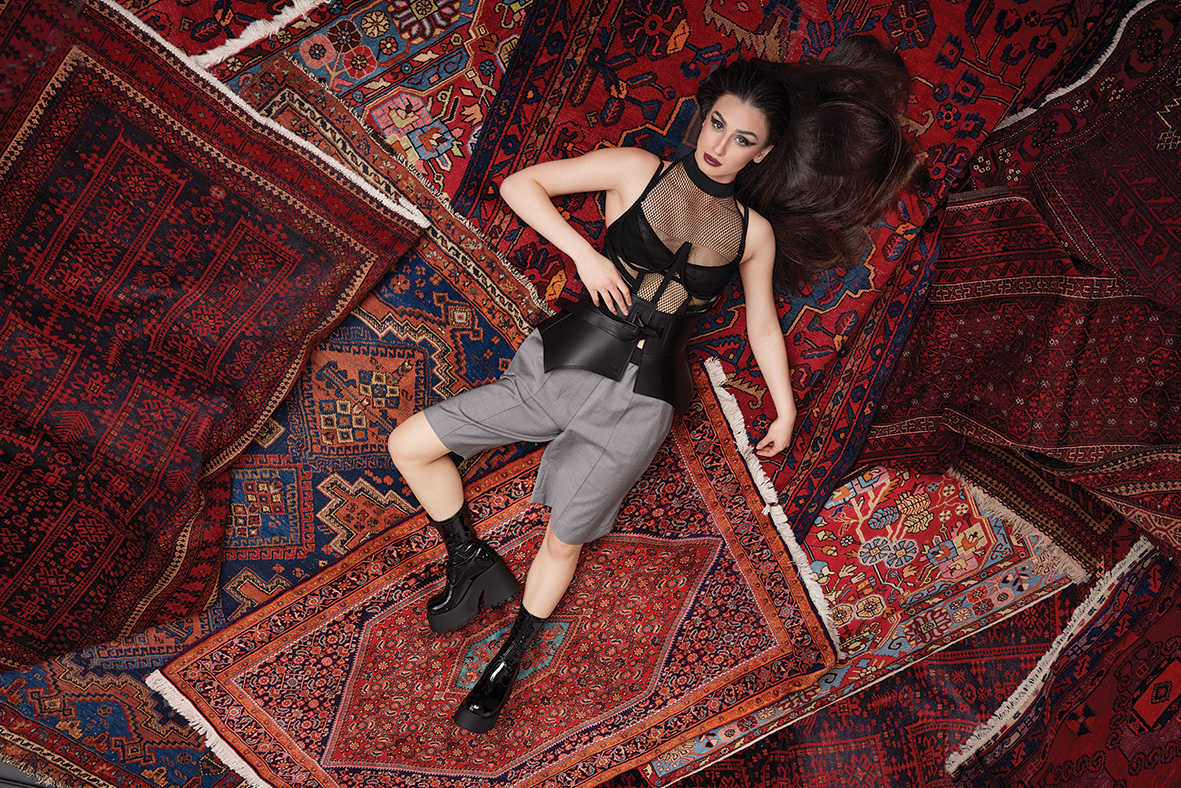
SHORTS— LOULOU STUDIO
BELT — LOEWE
from Holt Renfrew
TOP — Dion Lee
from Nordstrom Vancouver
RUGS — BALUCHI RUGS
@baluchi_rugs
Factors that Dictate Our Style
The colours and patterns we choose, the labels or brands we like, how our garments fit, how we accessorize, and the people we emulate all work together. When building our ideal personal style, it’s best to start by asking ourselves how this look makes us feel. We can describe it in three words most often, perhaps it’s powerful / confident / sexy. Or maybe creative / edgy / bohemian. You get the idea. It’s all part of branding, and in this case the brand is our selves.
Once we identify the image we want our clothes to send out to the world, the easier it is to choose the right pieces. We become our own fashion editors. Style is not fundamentally about trends or being fashionable, it’s about how capable we are of expressing our true selves. It’s good to understand the psychology behind our fashion choices and why certain types of clothing tend to dictate first impressions.
Iowa University Professor and author of The Meanings of Dress, Mary Lynn Damhorst says “dress is a systematic means of transmission of information about the wearer. A person’s choice of clothing can heavily influence the impression they transmit and is therefore a powerful communication tool. When it comes to communicating confidence and ability, what you wear plays an important role in creating positive first impressions.”
That Ideal First Impression
So how can we get closer to creating that crucial first impression and defining our personal brand? We can use colour, styling and fit as a great place to start.
Color Psychology
Colour is a great way to harness the power of fashion in making a first impression. Don’t pick out clothing colours randomly, instead consider very carefully when choosing. For example, blue indicates loyalty, stability, and tranquillity. Red is tied to passion, aggression, and intensity. Yellow expresses happiness, optimism, and youth. Black symbolizes power, mystery, and professionalism.
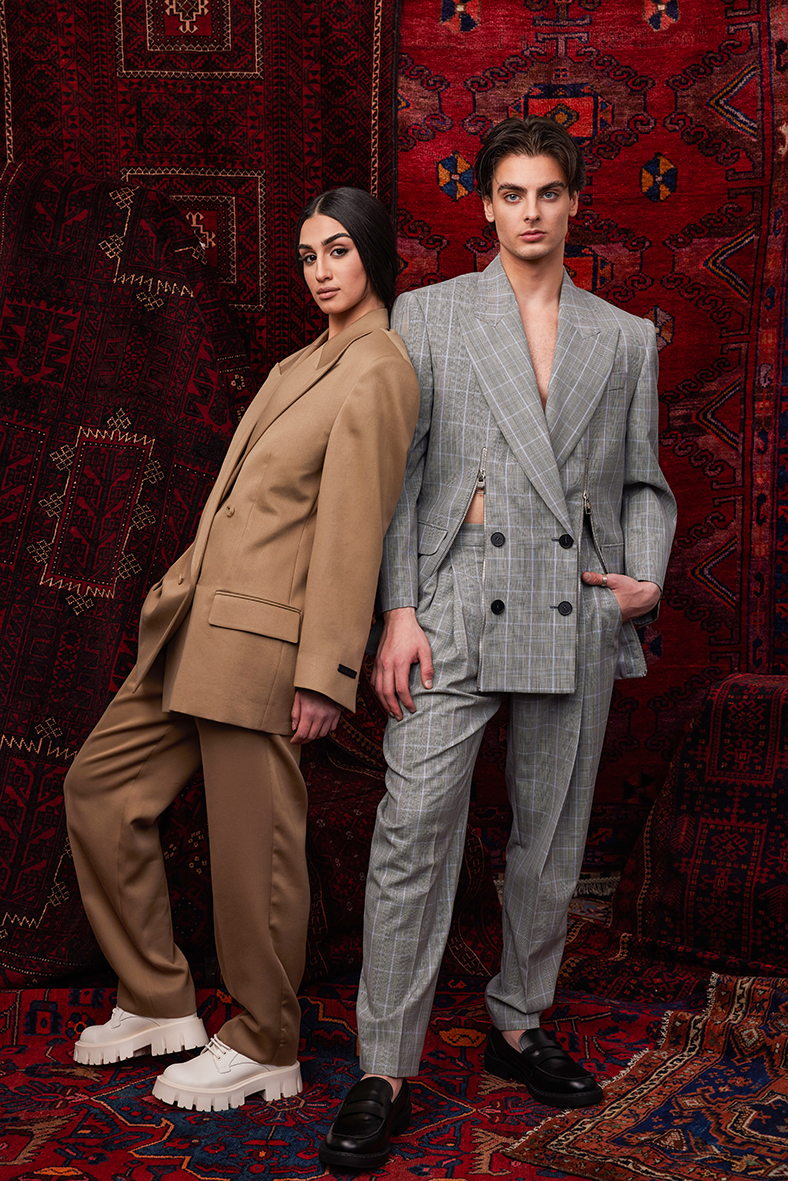
On Female
BLAZER— Fear of God
PANTS — Fear of God
from Nordstrom Vancouver
On Male
BLAZER— Alexander McQueen
PANTS — Alexander McQueen
from Holt Renfrew
RUGS — BALUCHI RUGS
@baluchi_rugs
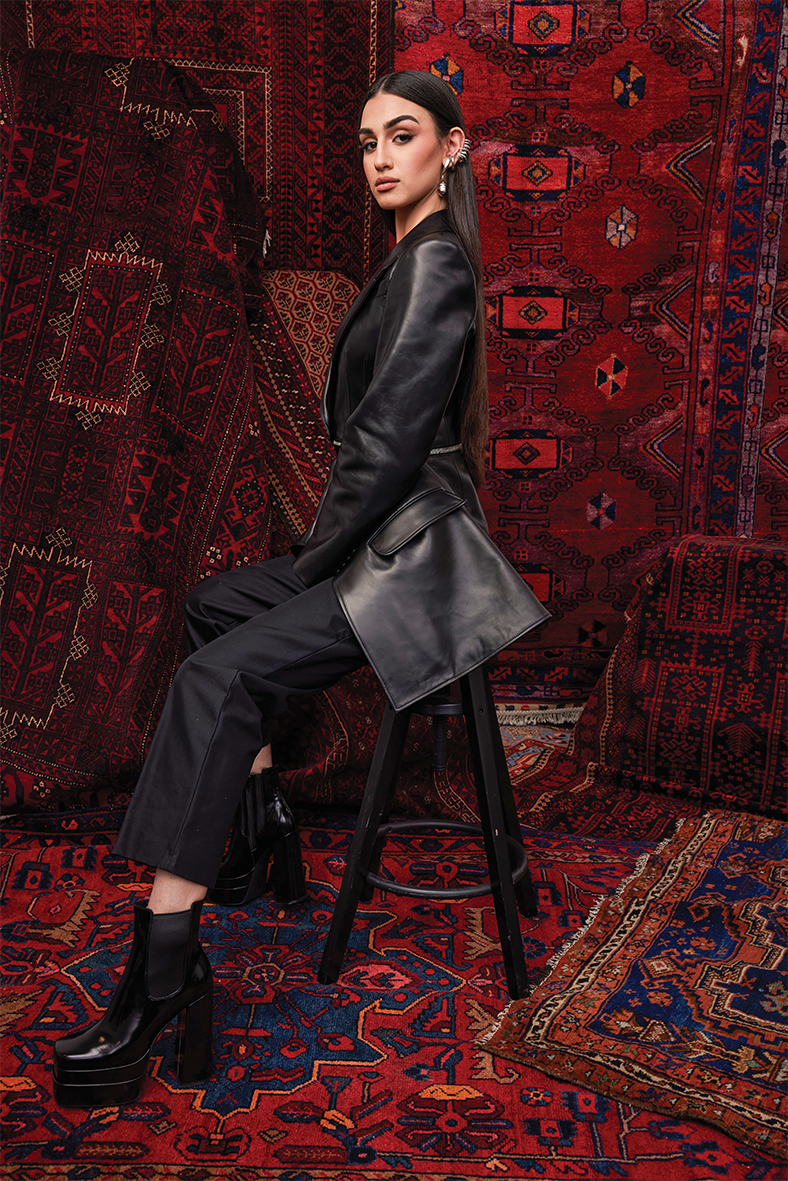
Blazer— Alexander McQueen
PANTS— Alexander WANG
from Holt Renfrew
EARRINGS — Alexander McQueen
from Nordstrom Vancouver
RUGS — BALUCHI RUGS
@baluchi_rugs
Styling
How we actually ‘wear’ our clothing; how we put a look together from the variety of items we mix together pulled from our closets, has a huge impact. In addition, accessories can completely change an outfit. Footwear, jewelry, scarves, handbags, and hats are easy ways to skew the impression of our style. A basic outfit can be switched up to a variety of looks with some careful styling, plus it’s a fun practice of self-expression.
Fit
How we tailor our clothes and the way garments fit our bodies affects how people perceive us. Tailored, fitted pieces tend to look pulled together, and provide a professional outward image, while loose fitting, flowing pieces come across as relaxed, laid back, and often artistic. Some common fit mistakes that are easily remedied? A shirt or blouse that pulls and strains at the buttonholes. Sleeves and pant lengths that are too long. A tailor can work wonders by moving a button or providing a quick hem job, but don’t underestimate simply trying a size up or down when shopping for results that may surprise. One label’s size 6 is another’s size 8.
Brands and Labels
Once we determine what clothing retailers and labels we gravitate to, what pieces suit us best, and what fit us well, we tend to be brand-loyal. Knowing what size we wear in our favourite clothing line keeps the stress down when shopping. Not everyone enjoys the process of choosing new clothes, and there is nothing wrong with sticking to what works.
Shop Bravely
Online shopping is a stretch for those who favour brick and mortar but does open up the options available past what boutiques are in any given neighbourhood. Most e-commerce sites have easy exchange and return policies, so give it a try. It may open up the possibilities of clothing options and add some interest to your existing wardrobe, beyond what you see at stores.
Use Contrast
Juxtaposing cut, colour and texture will make any outfit fun and more interesting. It can also communicate different sides of our personalities. Pair an edgy leather skirt with a sweet cashmere sweater. Demure jewelry with killer heels. Contrast keeps things interesting. And if interesting is how you want to be perceived – this is a no brainer.
Be Seen as More Professional
We don’t need to spend tons of money on clothes, especially if they fit well, and that holds true for both women and men. All we need is a good tailor. “You can take pieces that you have right now and transform the way you look by just making sure they are fitting you properly,” says Nic Screws, fashion consultant. A well-cut suit is always seen as more business-like and appropriate in certain work places, plus we’ve learned that dress-for-success is far more than just a catchy phrase.
Researcher Yoon-Hee Kwon of Northern Illinois University asked men and women about the effect of clothing on judgements made in a working environment, and found men believed wearing the correct work attire increased the likelihood of the perception that they were intelligent, competent, knowledgeable, honest, and reliable.
Last Word
New York City stylist Elsa Isaac says when we wear clothes we love, “You perform differently. You walk differently”. Since body language is key in conveying confidence and competence, choose clothes you feel fantastic wearing as that does impact other people’s impressions of us. It affects how we think and feel about ourselves. There’s power in knowing we can choose what we wear. Have fun with fashion. Play a little. Experiment. If something doesn’t work or feel right, switch it up. No one says we’re stuck with wearing something we don’t love. A good rule of thumb? If we have to question a piece of attire, don’t buy it. After all, it’s our choice.

